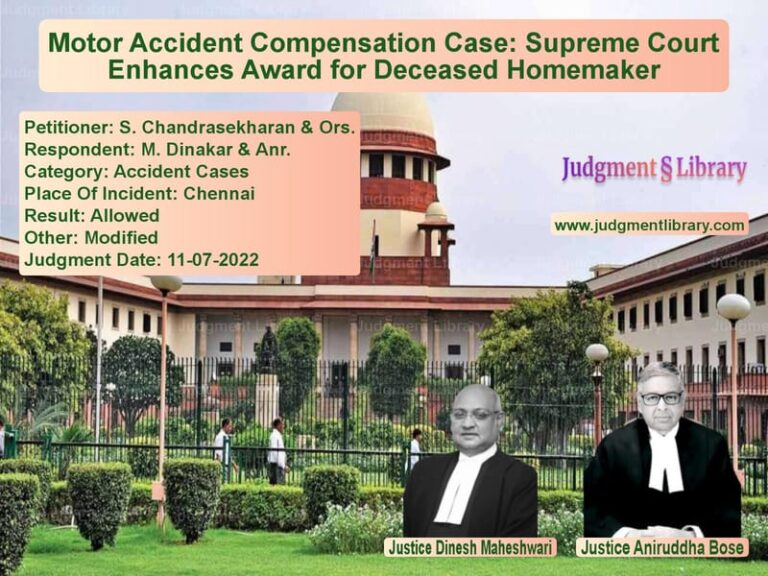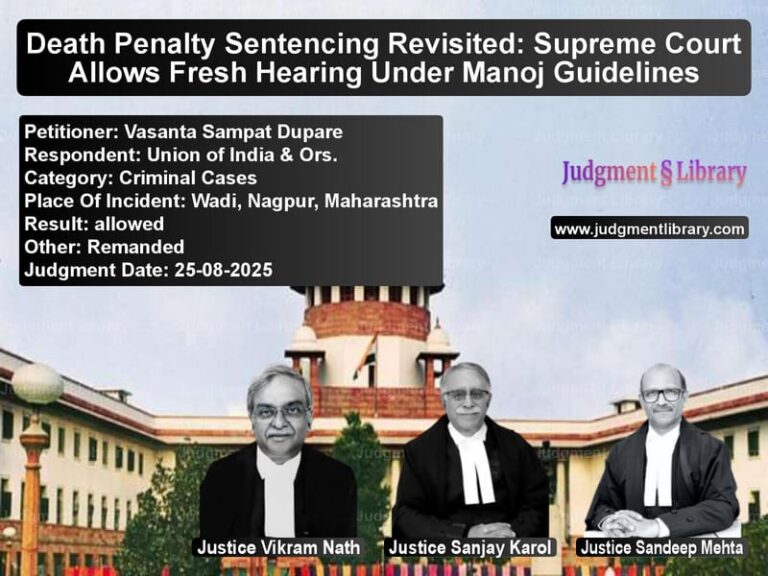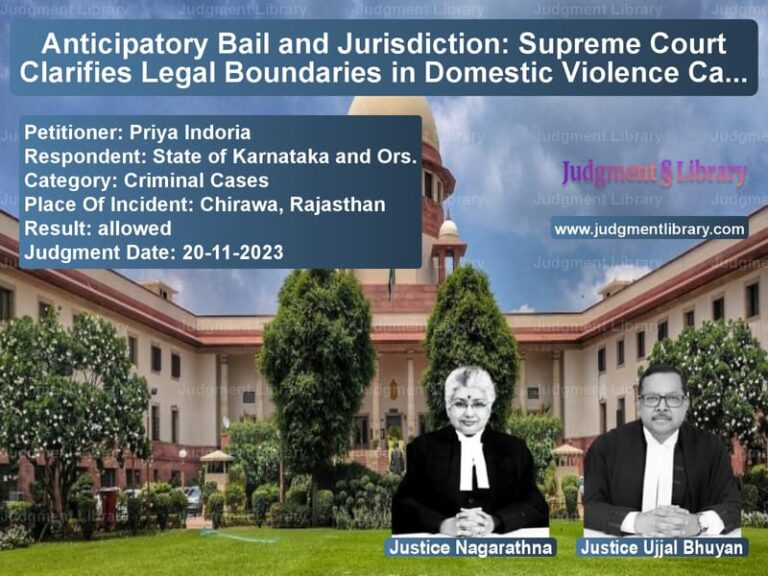Supreme Court Acquits Man in 25-Year-Old Robbery Case Due to Lack of Evidence
The case of Hansraj vs. State of Madhya Pradesh revolves around a criminal appeal challenging the conviction of the appellant under Sections 394 (Voluntarily causing hurt in committing robbery) and 397 (Robbery or dacoity with attempt to cause death or grievous hurt) of the Indian Penal Code (IPC). The Supreme Court had to determine whether the evidence presented by the prosecution was sufficient to uphold the conviction.
Background of the Case
The incident occurred on December 12, 1998, when the complainant, Bhagu Bai, was attacked while on her way to her field. The assailant allegedly covered her eyes, assaulted her with a knife, and snatched her silver jewelry, including a necklace, anklet, and bracelet. The complainant was unable to see or identify the attacker at the time of the crime.
The police arrested Hansraj two days later on December 14, 1998, based on suspicion. The prosecution claimed that Hansraj confessed to the crime during police interrogation and led the police to the stolen jewelry, which was recovered and later identified by the complainant. The trial court convicted him and sentenced him to seven years of rigorous imprisonment and a fine of Rs. 1,000. The High Court upheld the conviction in 2022, leading to an appeal before the Supreme Court.
Arguments by the Petitioner (Hansraj)
- The complainant initially stated that she could not identify the attacker, yet she later attempted to identify him in court.
- The prosecution relied entirely on the alleged recovery of stolen jewelry, but there was no independent evidence connecting him to the crime.
- The police coerced the accused into making a confession, which should not be admissible as per Section 27 of the Indian Evidence Act.
- The prosecution failed to prove that the recovered jewelry was the same as what was stolen from the complainant.
- The investigating officer did not properly follow legal procedures in recording the alleged confession and recovery of stolen items.
Arguments by the Respondents (State of Madhya Pradesh)
- The stolen jewelry was recovered based on the accused’s disclosure, which was a crucial piece of evidence.
- The complainant later identified the stolen jewelry as hers in a test identification parade.
- The High Court had already considered all aspects of the case and upheld the conviction, and the Supreme Court should not interfere.
Supreme Court’s Analysis and Judgment
The Supreme Court examined the evidence in detail and found several inconsistencies and procedural lapses:
- Identification of the Accused: The complainant had initially stated in the FIR that she was unable to identify the attacker. However, during the trial, she attempted to identify the accused in court, which the Supreme Court found unreliable.
- Reliance on Recovery of Stolen Jewelry: The conviction was largely based on the recovery of stolen jewelry, but the Court noted critical flaws in this evidence.
- The complainant admitted during cross-examination that she had identified the jewelry only after the police pointed it out to her, which raised doubts about the authenticity of the identification process.
- The investigating officer failed to state the exact words used by the accused during his alleged confession, which is necessary to prove a valid recovery under Section 27 of the Indian Evidence Act.
- There was no record showing that the recovered items were properly sealed and stored before being presented in court.
- Failure to Examine the Executive Magistrate: The prosecution did not call the magistrate who oversaw the identification parade to testify, further weakening the prosecution’s case.
Based on these deficiencies, the Supreme Court concluded:
“As a consequence of the above discussion, we have no hesitation in holding that the prosecution miserably failed to prove the factum of disclosure made by the accused to the Investigating Officer leading to the recovery of the silver articles allegedly looted by the accused from the complainant.”
The Court also emphasized that in criminal cases, the prosecution bears the burden of proving the guilt of the accused beyond a reasonable doubt. Since the prosecution failed to do so, the benefit of the doubt had to be given to the accused.
Supreme Court’s Order
- The conviction and sentence imposed by the Trial Court and upheld by the High Court were set aside.
- The accused, Hansraj, was acquitted of all charges.
- He was ordered to be released from custody immediately unless he was wanted in any other case.
Conclusion
The Supreme Court’s decision underscores the importance of adhering to proper legal procedures in criminal investigations. The judgment highlights the necessity of independent and reliable evidence to convict an accused, rather than solely relying on confessions made in police custody and questionable recovery of stolen property. This case serves as a reminder that procedural lapses and insufficient evidence can lead to wrongful convictions, and courts must exercise caution to ensure justice is served.
Petitioner Name: Hansraj.Respondent Name: State of Madhya Pradesh.Judgment By: Justice B.R. Gavai, Justice Sandeep Mehta.Place Of Incident: Mandsaur, Madhya Pradesh.Judgment Date: 19-04-2024.
Don’t miss out on the full details! Download the complete judgment in PDF format below and gain valuable insights instantly!
Download Judgment: hansraj-vs-state-of-madhya-prad-supreme-court-of-india-judgment-dated-19-04-2024.pdf
Directly Download Judgment: Directly download this Judgment
See all petitions in Bail and Anticipatory Bail
See all petitions in Fraud and Forgery
See all petitions in Theft and Robbery Cases
See all petitions in Judgment by B R Gavai
See all petitions in Judgment by Sandeep Mehta
See all petitions in allowed
See all petitions in Quashed
See all petitions in supreme court of India judgments April 2024
See all petitions in 2024 judgments
See all posts in Criminal Cases Category
See all allowed petitions in Criminal Cases Category
See all Dismissed petitions in Criminal Cases Category
See all partially allowed petitions in Criminal Cases Category







